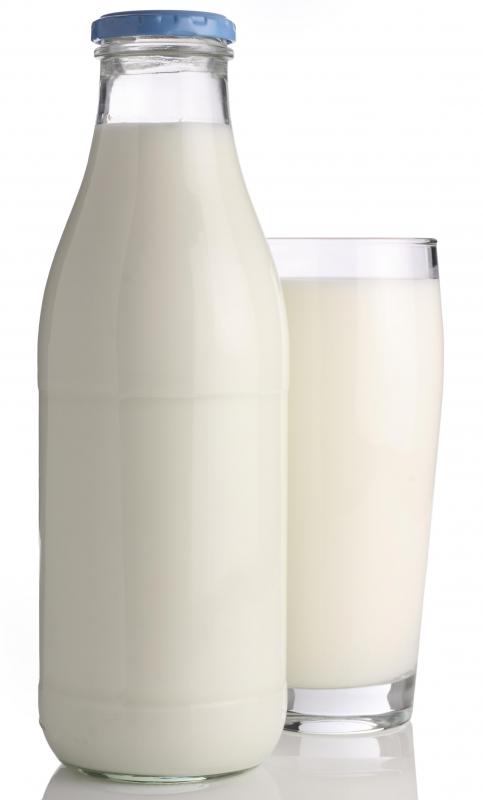At WiseGEEK, we're committed to delivering accurate, trustworthy information. Our expert-authored content is rigorously fact-checked and sourced from credible authorities. Discover how we uphold the highest standards in providing you with reliable knowledge.
What is the Connection Between Vitamin D and Milk?
The D vitamin is considered an important nutrient that the human body needs to ensure proper bone development and can also be beneficial to the immune and cardiovascular systems. Vitamin D and milk are related because, for decades, commercially sold milk has been fortified with vitamin D in the hopes of making this nutrient more accessible to the public. As a result, milk has become one of the best known and most utilized sources of this vitamin.
Incorporating this nutrient into an everyday diet by pairing vitamin D and milk helps the human body effectively absorb the calcium and phosphorus it needs to grow strong, resilient bones. People — especially children — who are deficient in vitamin D are prone to bone disorders such as rickets, that result in weak and brittle bones. Healthy development of the skeletal system is most commonly associated with vitamin D, but it can also protect the cardiovascular and immune systems.

Although the health benefits of vitamin D are widely credited by scientists, it can be difficult to incorporate enough of it into daily diets. Most people know that vitamin D production is facilitated by exposure to sunlight. Unfortunately excess sun exposure comes with its own host of health problems, most notably skin cancer. The fact that vitamin D is not found in many whole, natural foods severely complicates the problem of accessibility.

Fatty, oily fish like salmon and tuna are good sources of vitamin D, and eggs contain some also. Diets rich in these foods are a good way to increase vitamin D intake naturally, but come with their own drawbacks. Fresh fish can be expensive or difficult to find, and people with high cholesterol often avoid eggs. Some people resort to taking vitamin D supplements to make sure they get enough, but these can be costly and supplements are not tightly regulated by public health agencies.

Pairing vitamin D and milk was designed to make the nutrient more accessible. When researchers noticed that the general public was not able to ingest enough vitamin D to keep them healthy, manufacturers started fortifying milk with vitamin D. Vitamin D and milk are a logical combination because a large percentage of most populations, especially children, drink milk. Another benefit of combining vitamin D and milk is that drinking a glass of fortified milk ensures the efficient absorption of the calcium milk contains. Milk is versatile and fairly inexpensive, making it a good vessel with which to distribute vitamin D.
AS FEATURED ON:
AS FEATURED ON:














Discuss this Article
Post your comments